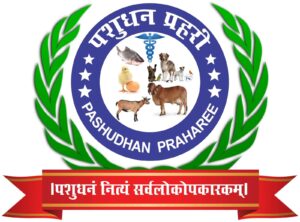India’s Zoo Biobank: A Milestone in Wildlife Conservation
India has taken a groundbreaking step in wildlife conservation with the establishment of the country’s first Zoo Biobank. This initiative aims to preserve genetic material from endangered and rare species, contributing to biodiversity conservation, research, and future wildlife protection strategies. The biobank serves as a genetic reservoir, ensuring the survival of species facing threats from habitat loss, climate change, and human activities.
What is a Zoo Biobank?
A Zoo Biobank is a specialized facility where genetic material, such as DNA, tissues, gametes (sperm and eggs), and blood samples, is collected, stored, and preserved under controlled conditions. These biological samples can be used for scientific research, genetic studies, and conservation breeding programs.
Objectives of India’s First Zoo Biobank
- Preservation of Genetic Diversity – Protects the genetic material of endangered species for future conservation efforts.
- Support for Breeding and Reintroduction Programs – Assists in artificial reproduction and cloning techniques to revive declining species.
- Wildlife Disease Research – Helps in understanding and preventing zoonotic diseases affecting wildlife.
- Climate Change Adaptation – Provides crucial insights into how species are adapting to environmental changes.
- Global Collaboration – Facilitates partnerships with international conservation bodies and research institutions.
Implementation & Functioning
- Sample Collection & Storage – Genetic material is collected from living and deceased animals in zoos, wildlife sanctuaries, and national parks.
- Advanced Preservation Techniques – Cryopreservation methods (freezing at ultra-low temperatures) are used to store viable biological samples.
- Research & Genetic Analysis – Scientists analyze stored genetic data to study species evolution, disease resistance, and genetic disorders.
- Collaboration with Zoos & Conservation Agencies – Works alongside Central Zoo Authority (CZA), Wildlife Institute of India (WII), and state forest departments for data sharing and research.
Impact & Benefits of the Zoo Biobank
- Revival of Threatened Species: Helps in restoring declining animal populations through reproductive technologies.
- Improved Wildlife Management: Supports better wildlife conservation planning by understanding species genetics.
- Disease Prevention: Enables early detection and prevention of wildlife diseases and genetic disorders.
- Long-Term Biodiversity Conservation: Ensures that future generations can study and conserve species effectively.
Challenges & Future Prospects
- Ethical & Legal Considerations – Addressing concerns related to genetic manipulation and conservation ethics.
- Technical Expertise & Infrastructure – Need for skilled professionals and advanced facilities for long-term storage.
- Funding & Policy Support – Requires continuous financial and governmental backing to sustain research and operations.
India’s first ‘bio bank’ in a zoo is operational at Padmaja Naidu Himalayan Zoological Park (Darjeeling Zoo) in West Bengal.
- The facility is set up in partnership with the Centre for Cellular and Molecular Biology (CCMB) under the Ministry of Science and Technology.
- More bio banks are planned for other zoos, including the National Zoo (Delhi) and Nandankanan Zoo (Odisha).
About Biobank
- The biobank, also known as “frozen zoo”.
- It collects and preserves DNA, cell, and tissue samples from endangered species and reproductive cells from deceased animals.
- Till date, samples from 60 animals of 23 specieshave been collected by this facility.
- Cryogenic Storage: Samples are preserved at -196°C in liquid nitrogen to maintain genetic diversity.
State Biobank in India
- There are 19 registered biobanks in India host to many biological specimens, including cancer cell lines and tissues.
- Earlier this year, the ‘Genome India‘ programme finished sequencing 10,000 genomes from 99 ethnic groups, to identify treatments for rare genetic diseases, among others.
- Thepan-India ‘Phenome India’ project has collected 10,000 samples to create better prediction models for cardio-metabolic diseases.
- The Paediatric Rare Genetic Disorders (PRaGeD) mission could help identify new genes or variants to develop targeted therapies for genetic diseases that affect children.
- However, biobank regulations in India are a significant hurdle to realising the full potential of precision medicine.
Significance of a Biobank in a Zoo
- Conservation of Endangered Species: Helps preserve genetic material of species on the verge of extinction, ensuring their survival in the future.
- Potential for Species Revival : Stored DNA and reproductive cells can be used in advanced biotechnological processes like cloning to bring back extinct or critically endangered species.
- Genetic Diversity Preservation: Maintaining a diverse gene pool prevents inbreeding and genetic disorders in captive breeding programs.
- Support for Research & Medicine: Scientists can study genetic diseases, evolutionary biology, and develop conservation strategies using preserved samples.
- Backup for Conservation Breeding Programs : Supports zoos involved in captive breeding, ensuring a secure genetic resource for rare species.
- National and Global Impact: Aligns with global conservation efforts and serves as a model for other zoos and wildlife research institutions.
- Prevention of Biodiversity Loss: By preserving genetic materials, biobanks contribute to maintaining biodiversity even if species decline in the wild.
Ethical Implications in Establishing a Biobank
- Informed Consent & Ownership: Determining rightful ownership of stored samples and ensuring informed consent from donors is challenging.
- Privacy & Data Security: Sensitive genetic information must be protected against misuse, discrimination, or unauthorized access.
- Fair Access & Benefit Sharing: Equitable use of biobank resources, especially concerning indigenous communities and biodiversity hotspots, must be ensured.
- Animal Welfare Concerns: Ethical handling of reproductive material from deceased or endangered animals requires clear guidelines.
Suggestions to Avoid Ethical Conflicts
- Robust Legal Framework: Implement comprehensive laws to regulate consent, data protection, and sample ownership.
- Transparency & Public Engagement: Foster trust through open communication and stakeholder involvement in decision-making.
- Ethical Oversight Committees: Establish independent review boards to monitor and address ethical concerns.
- International Collaboration: Align biobanking policies with global best practices to ensure ethical and scientific integrity.
Padmaja Naidu Himalayan Zoological Park
- Largest high altitude zoo in India.
- Specialises in breeding animals adapted to alpine conditions, and has successful captive (conservation) breeding programs for species including:
- Red panda (Endangered )
- Snow leopard (Vulnerable)
- Himalayan wolf (Vulnerable)
India’s first Zoo Biobank marks a significant milestone in wildlife conservation. By harnessing genetic technology and scientific advancements, this initiative strengthens efforts to protect endangered species and preserve India’s rich biodiversity for future generations. With continuous research and policy support, the biobank can become a model for global conservation strategies.



